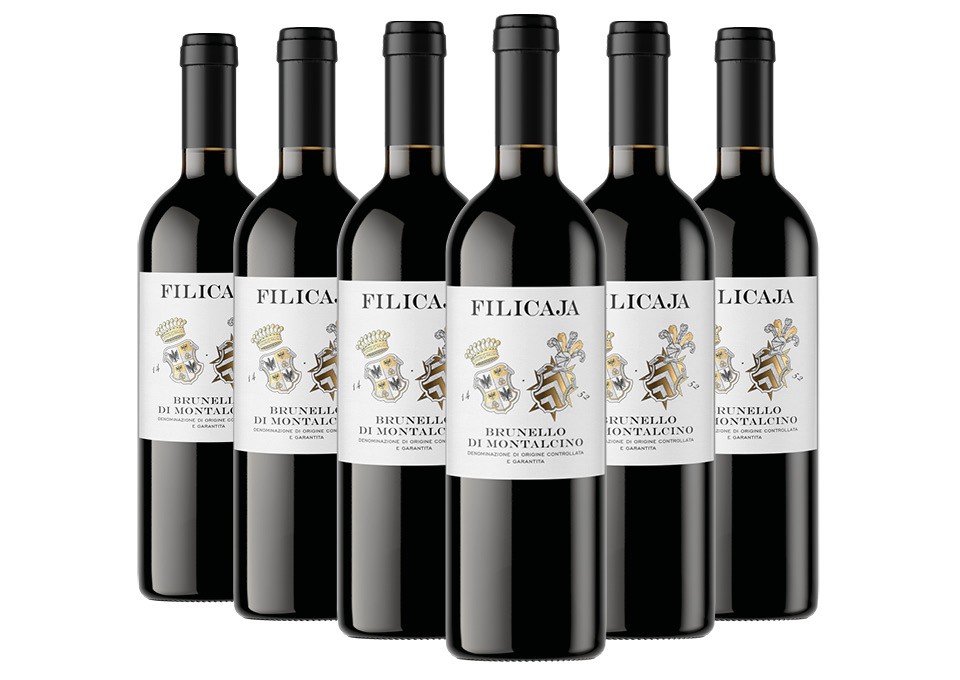Sangiovese
In addition to being the symbol of Tuscany for wine, Sangiovese is the most widespread grape variety in Italy today with almost 72,000 hectares of vineyards. A massive presence justified by the great adaptability of Sangiovese and by enviable organoleptic capacities, perfect for the creation of pure wines or blends of great value. This is the case in which Sangiovese appears in appellations such as Carmignano, Rosso Piceno , Rosso Conero, Chianti, Brunello di Montalcino, Vino Nobile di Montepulciano, Morellino di Scansano, Sangiovese di Romagna. Today, however, Sangiovese is diversified into many clones, which can be identified in two large groups: Sangiovese Grosso ( Brunello di Montalcino, Prugnolo Gentile di Montepulciano, Sangiovese Grosso di Lamole, Sangiovese Romagnolo) and Sangiovese Piccolo. Sangiovese remains an extremely adaptable grape and capable of acclimating itself to very different pedoclimatic conditions, always guaranteeing the creation of distinctly territorial wines.
With its origins for a long time shrouded in mystery, Sangiovese is today considered, also thanks to the analysis of its DNA, a probably spontaneous cross between Ciliegiolo and a vine from Southern Italy: the Calabrese di Montenuovo. Sangiovese prefers sunny places with a cool and breezy climate, while it becomes expressive if grown on poor soils, rich in skeleton and with a good percentage of limestone. Sangiovese can thus be counted as a gritty and impetuous wine, with marked tannins, a marked acidity, medium body and great concentration. Its versatility provides, in the case of Chianti Classico, for example, a basic version, a Riserva and a Gran Selezione, all suitable for making Sangiovese's response to different ripening periods known. However, the generic notes on the bright ruby red color, the characteristic aromas of cherry, violet, morello cherry, blood orange and ripe red fruit remain valid. It produces ample wines on the palate, with medium or full body, with a pronounced and moderately reduced tannic presence even in the most worked versions, as well as being able to ensure good freshness and aromatic persistence.
Buy Sangiovese
For those who love wine and retain a true passion for Italian wine, Sangiovese is undoubtedly one of the most authentic expressions of the territoriality of the Peninsula. Buying Sangiovese online means first of all knowing its chosen territory, Tuscany, which has been successfully growing this variety for hundreds of years, so much so that it has attracted great public attention both towards the blend and the food and wine tourism that affects many areas of the region. . Another reason to buy Sangiovese is the fact that it is suitable both as a table wine and as a meditation wine: versatile and authentic, capable of reserving many surprises and surprising despite its recognizable identity. In summary: buying Sangiovese online means owning one of the treasures that the world envies the Italy of wine.
What are the Sangiovese varieties?
If we analyze the types of Sangiovese grown in Italy, we realize that under the genetic profile there are some differences that make it possible to place different clones in the same family, i.e. plants that retain a genetic material similar but not identical to the plant of origin. In the case of the famous Sangiovese B-Bs 11 clone we are faced with a selection of Sangiovese that has made the history of Brunello di Montalcino with Biondi Santi. Naturally, the possibility of creating clones by companies, as well as their subsequent registration in the National Register of Varieties, must contemplate the real peculiarity of the clone reared in terms of resistance to diseases and adaptation to the terroir. In the particular case of Tuscany, it seems that the weaknesses of Sangiovese cultivated up to the 70s of the last century had also contributed to the birth of the Super Tuscans, in which the improvement of international blends would have corrected the improper properties of Sangiovese and pushed towards investment in clonal selection.
What is the characteristic flavor of Sangiovese?
The organoleptic recognition of Sangiovese largely depends on a distinct and easily traceable flavor. The characteristic flavor of Sangiovese includes blood orange, violet, cherry, ripe red fruits, but also tomato, licorice and balsamic notes which, combined together, determine a structured palate, with pronounced acidity that gives tension and strength, while gradually releasing hints of green and refreshing notes such as oregano.
Where is the Sangiovese grape grown?
There are many regions where the Sangiovese grape is cultivated and widely spread. These include Tuscany, Marche, Lazio, Emilia-Romagna, while beyond the national borders Sangiovese is grown in Corsica, California, Argentina and Australia.
Brunello di Montalcino DOCG 2018 Fattoria dei Barbi
The Brunello di Montalcino of Fattoria dei Barbi is born in vineyards located between the rolling hills of Montalcino and Scansano, in the heart of Tuscany.
It is produced exclusively with Sangiovese grapes, harvested towards the end of August. After a crushing-destemming, the grapes ferment in barriques at a controlled temperature of 27-28 ° C for about 16-17 days. Subsequently the wine ages in oak barrels for at least 2 years, and for a further 4 months in bottle.
This Brunello is characterized ...
View product pageBrunello di Montalcino DOCG 2018 Fattoria dei Barbi

Chianti Classico DOCG Riserva del Granaio 2019 Borgo San Frediano
The Granaio Reserve takes inspiration from a fascinating legend linked to the "Granaio dell'Abbondanza" of San Frediano. This ancient building, initially a granary, was transformed into a barracks and later became the residence of the Knights of the Order of Saint Stephen. Legend has it that the knights discovered a secret room inside the building, containing bottles of wine aged in great secrecy by the Cistercian monks of the nearby monastery. These bottles, known as "La Riserva del Granaio," b...
View product pageChianti DOCG Riserva del Conte 2019 Villa da Filicaja
The Chianti Riserva del Conte was born in the heart of Tuscany.
It is produced with first choice Sangiovese and Canaiolo grapes, grown with sacred respect for nature and the environment. The wine is aged for one year in Allier barrique and aged for another year in the bottle.
It is characterized by an intense ruby red color. It has hints of red berries on the nose, with notes of licorice and rose jam. The taste is harmonious, dry and structured.
Perfect in combination with first courses based on me...
View product pageChianti DOCG Riserva del Conte 2019 Villa da Filicaja
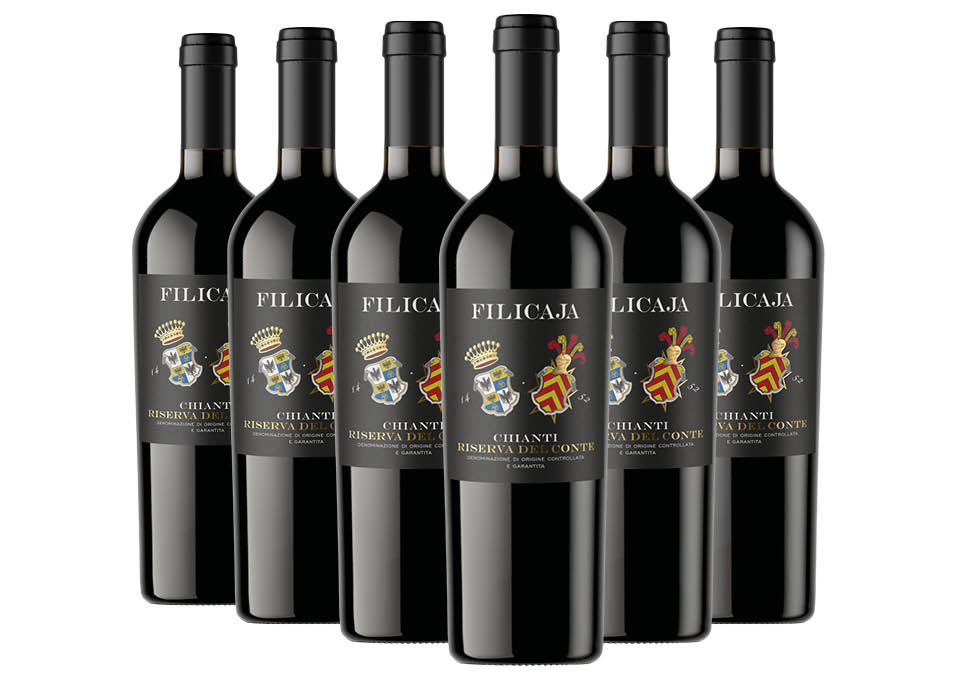
Brunello di Montalcino DOCG 2020 Banfi
Brunello di Montalcino di Banfi is born in vineyards located between the Orcia and Ombrone rivers, in the southern slope of the municipality of Montalcino, a territory unique in the world for tradition and wine culture.
It is produced exclusively with Sangiovese grapes. Fermentation takes place in stainless steel tanks at controlled temperature for 10-12 days. Subsequently the wine ages in barrique for 2 years, and for further 8-12 months in bottle.
This Brunello is characterized by an intense rub...
View product pageBrunello di Montalcino DOCG 2020 Banfi
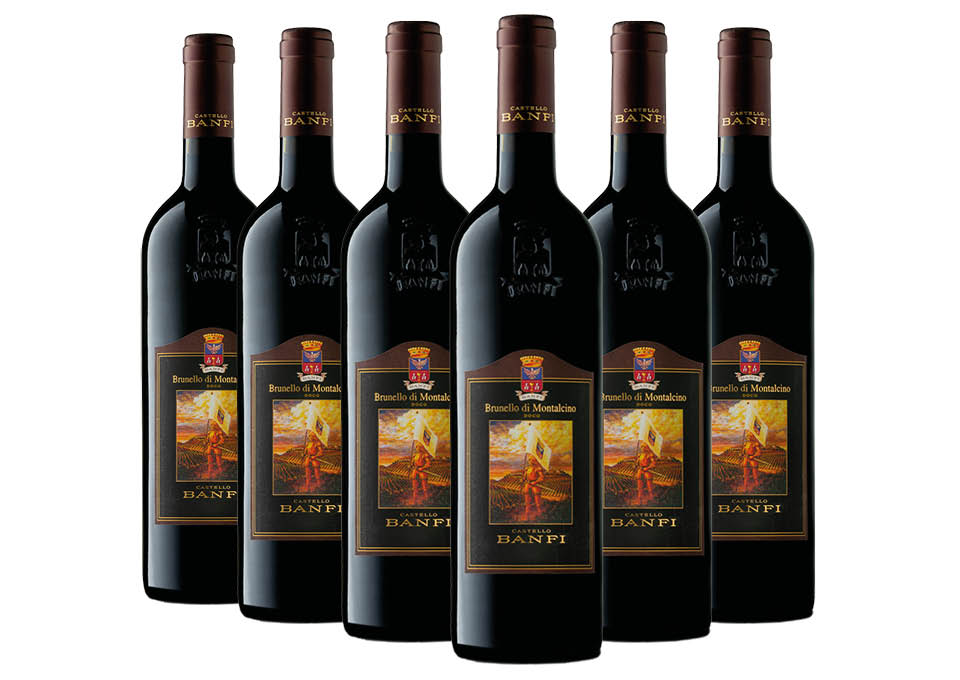
Chianti Classico DOCG 2023 Castellare di Castellina
The Chianti Classico of Castellare di Castellina comes from vineyards located in the municipality of Castellina in Chianti.
It is produced with 95% Sangiovese grapes and 5% Canaiolo grapes, harvested in October. Fermentation takes place in stainless steel tanks at a controlled temperature of 28 ° C for 15-20 days. Subsequently the wine is aged in barrique for 7 months, and for a further 7 months in bottle.
This Chianti Classico is characterized by a brilliant ruby red color with purple reflections...
View product pageBrunello di Montalcino DOCG 2019 Pian del Prete
Brunello Pian del Prete is produced in the renowned Montalcino region, known for its limestone soils enriched with clay and shale. This terroir, located at 350 meters above sea level, benefits from the sea breezes coming from the Maremma, which help create the ideal conditions for growing the vine.
The winemaking involves fermentation in stainless steel tanks for a period of 15-20 days. Subsequently, the wine undergoes a period of refinement of 20 months in oak barrels, followed by 4 months in ba...
View product pageChianti Rufina Riserva DOCG Nipozzano 2021 Frescobaldi
The Chianti Rùfina Riserva Nipozzano by Frescobaldi was born in the vineyards of the Castello di Nipozzano, located in the Chianti Rùfina area.
It is mainly produced with Sangiovese and complementary grapes, such as Malvasia Nera, Colorino, Merlot and Cabernet Sauvignon, harvested by hand between the end of September and the beginning of October. The different varieties ferment separately in stainless steel containers, at a temperature below 30 °C for 13 days, then the maceration continues for 25...
View product pageChianti Rufina Riserva DOCG Nipozzano 2021 Frescobaldi
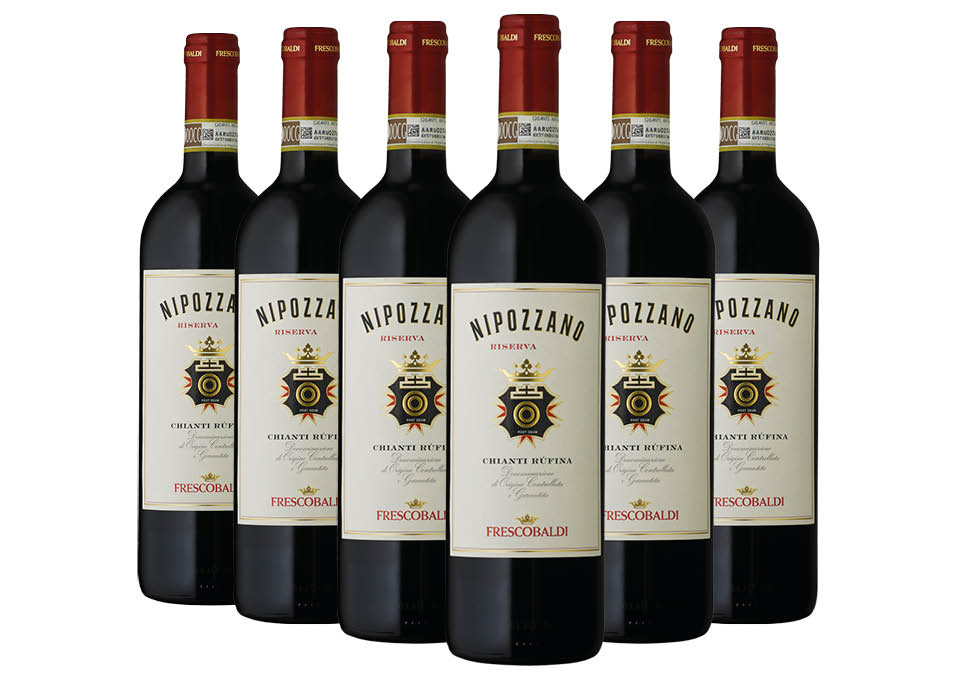
Brunello di Montalcino DOCG 2019 Fattoria dei Barbi
The Brunello di Montalcino of Fattoria dei Barbi is born in vineyards located between the rolling hills of Montalcino and Scansano, in the heart of Tuscany.
It is produced exclusively with Sangiovese grapes, harvested towards the end of August. After a crushing-destemming, the grapes ferment in barriques at a controlled temperature of 27-28 ° C for about 16-17 days. Subsequently the wine ages in oak barrels for at least 2 years, and for a further 4 months in bottle.
This Brunello is characterized ...
View product pageBrunello di Montalcino DOCG 2019 Fattoria dei Barbi
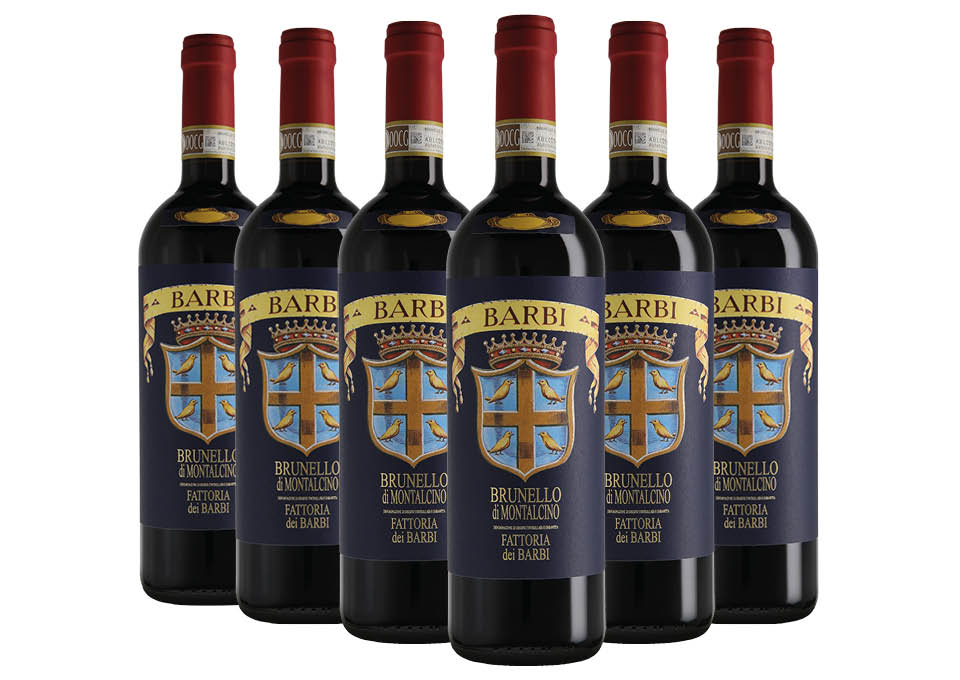
Chianti Classico DOCG 2021 Isole e Olena
The Chianti Classico of Isole e Olena is born in vineyards located on the gentle hills of Barberino Val d'Elsa, in the province of Florence.
It is produced 80% with Sangiovese grapes, 15% with Canaiolo grapes and 5% with Syrah grapes, harvested partly by hand and partly mechanically at the beginning of October. After the destemming and a soft pressing, the grapes macerate for about 12-20 days with pumping over twice a day and de-aging. The wine then ages in barriques and barrels for about 12 mont...
View product pageBrunello di Montalcino DOCG 2019 Geografico
The Brunello di Montalcino labeled Geografico is born from the meeting of the best Sangiovese Grosso grapes and the sandy clayey soil of the Montalcino territory.
The vinification takes place traditionally in red, then the wine stays for 22 months between oak barrels and barriques, and then ends its evolution by remaining for 2 more months in bottle.
Wine with an intense ruby red color, it offers a glorious and decisive range of fruity aromas that anticipate a full and structured palate, rich in t...
View product pageBrunello di Montalcino DOCG 2019 Geografico
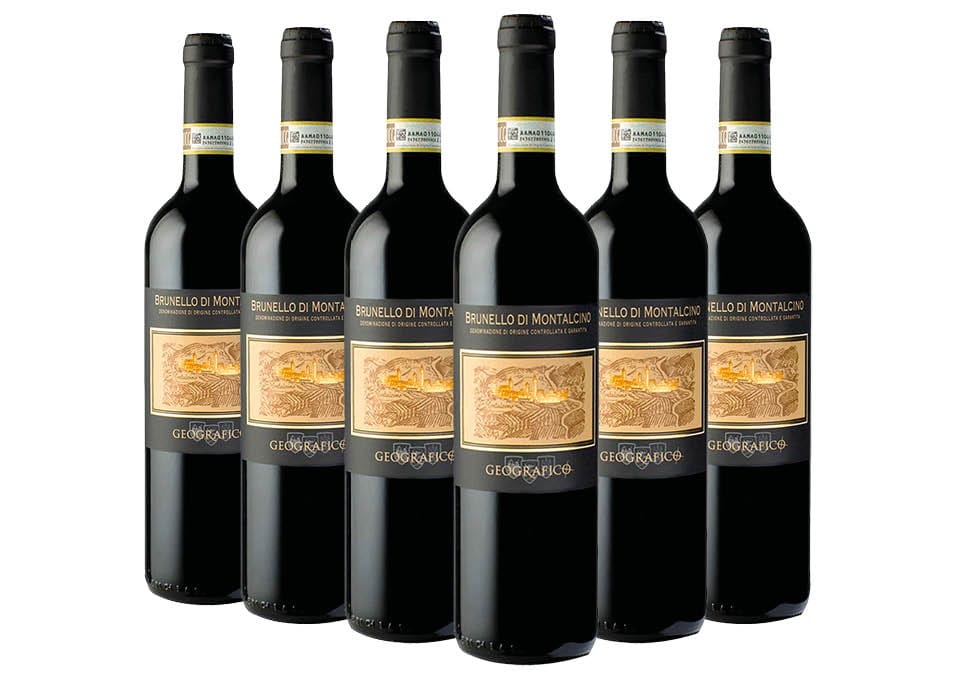
Brunello di Montalcino DOCG Collezione del Conte 2019 Villa da Filicaja
The Brunello di Montalcino of Villa da Filicaja originates from vineyards located on the south-west side of the municipality of Montalcino.
It is produced with 100% Sangiovese grapes, harvested manually during the first ten days of October. After destemming, alcoholic fermentation takes place in stainless steel at a controlled temperature of 28-30 ° C with frequent pumping over and delestages; maceration on the skins lasts about 25 days. After malolactic fermentation, the wine is placed in 30 and...
View product pageBrunello di Montalcino DOCG Collezione del Conte 2019 Villa da Filicaja
